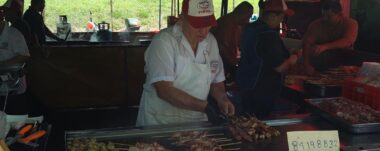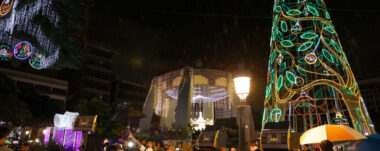Frogs of Costa Rica: symbols of life, color, and natural balance
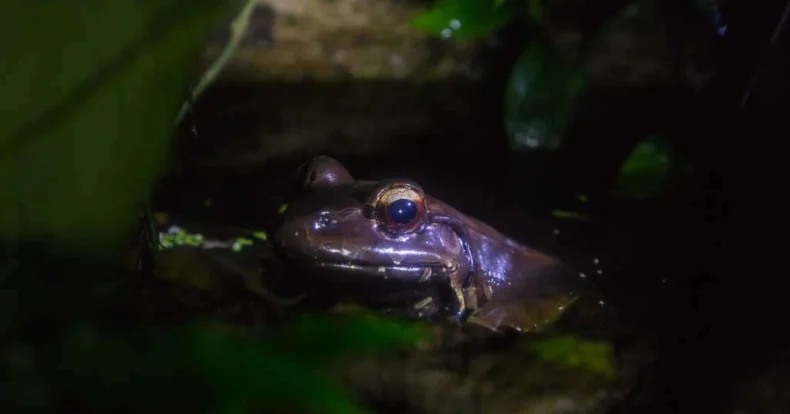
Costa Rica alberga más de 149 especies de ranas, entre ellas la famosa rana arbórea de ojos rojos y las coloridas ranas dardo venenosas. Las ranas son más activas después del atardecer, por lo que las caminatas nocturnas son ideales para observarlas.
During the green season, from May to November, you are more likely to find them in full activity.
Amphibians of Costa Rica: beauty, biodiversity, and conservation
Costa Rica’s natural wealth makes it a paradise for those seeking to see frogs in their natural habitat. Its variety of ecosystems, including tropical rainforests, cloud forests, mangroves, and wetlands, provides the perfect conditions for a wide diversity of amphibians.
Beyond their beauty, frogs play a vital role in ecological balance. They are both predators and prey, helping to control insect populations and serving as food for larger animals.
They are also indicators of environmental health. The presence of healthy frog populations reflects a balanced and well-preserved ecosystem.
Costa Rica’s most iconic frogs
Every walk through the rainforest can feel like a treasure hunt. With over a hundred species, these are some of the most recognizable and fascinating:
Red-eyed tree frog
This is Costa Rica’s most iconic frog. Its bright green body, red eyes, and blue and yellow tones on its sides make it an unmistakable species. It is nocturnal and camouflages itself perfectly during the day among the vegetation.
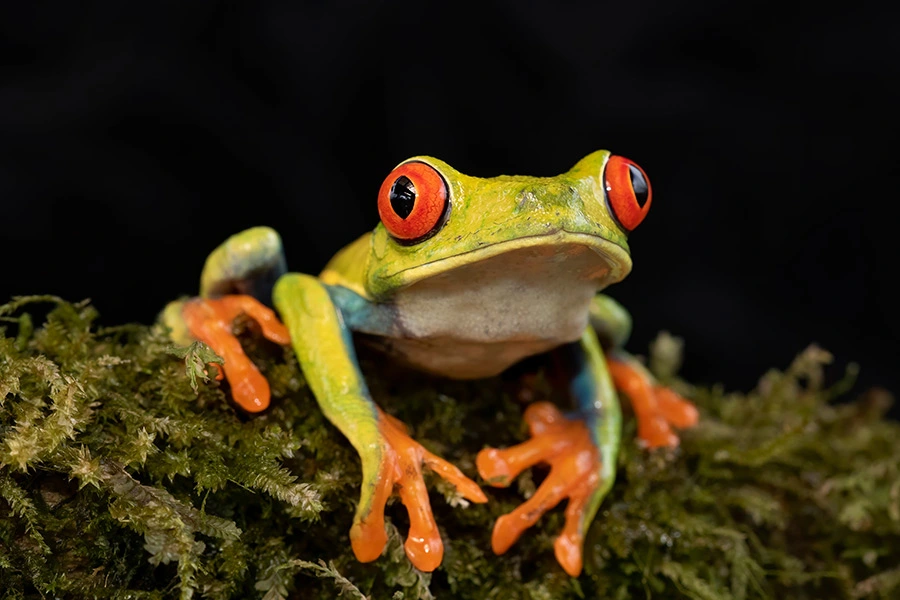
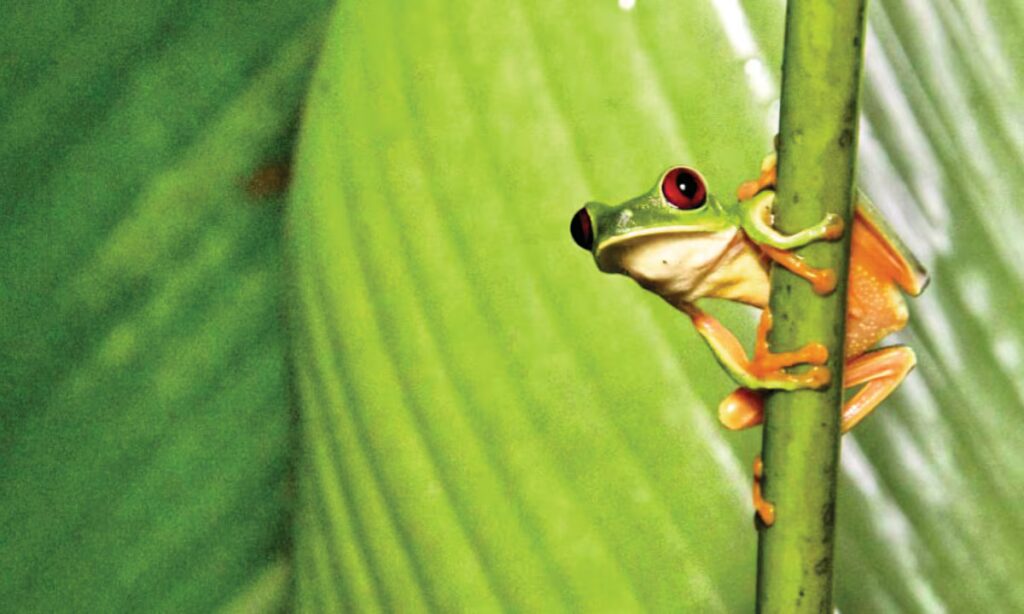
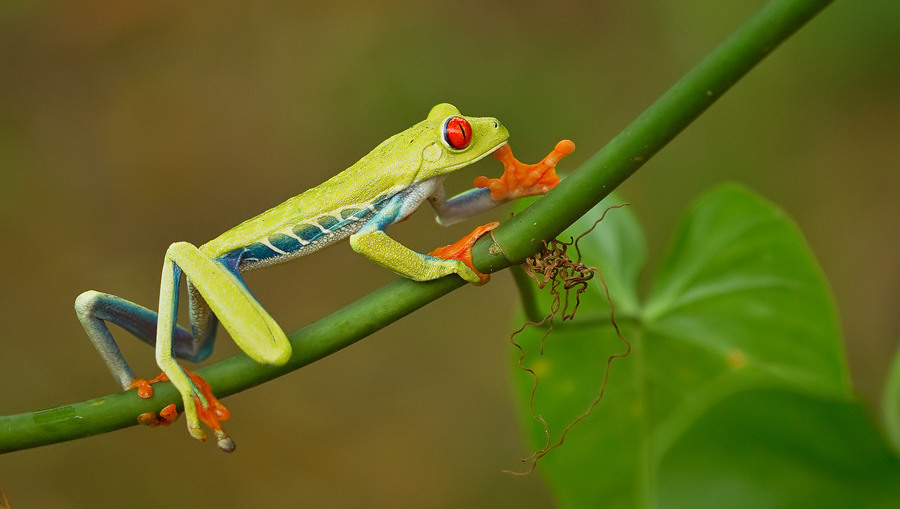
Strawberry Poison Dart Frog
With its bright red color and blue legs, this small frog is also known as the “jeans frog.” It lives in lowland forests and is easy to identify by its striking color and loud call.
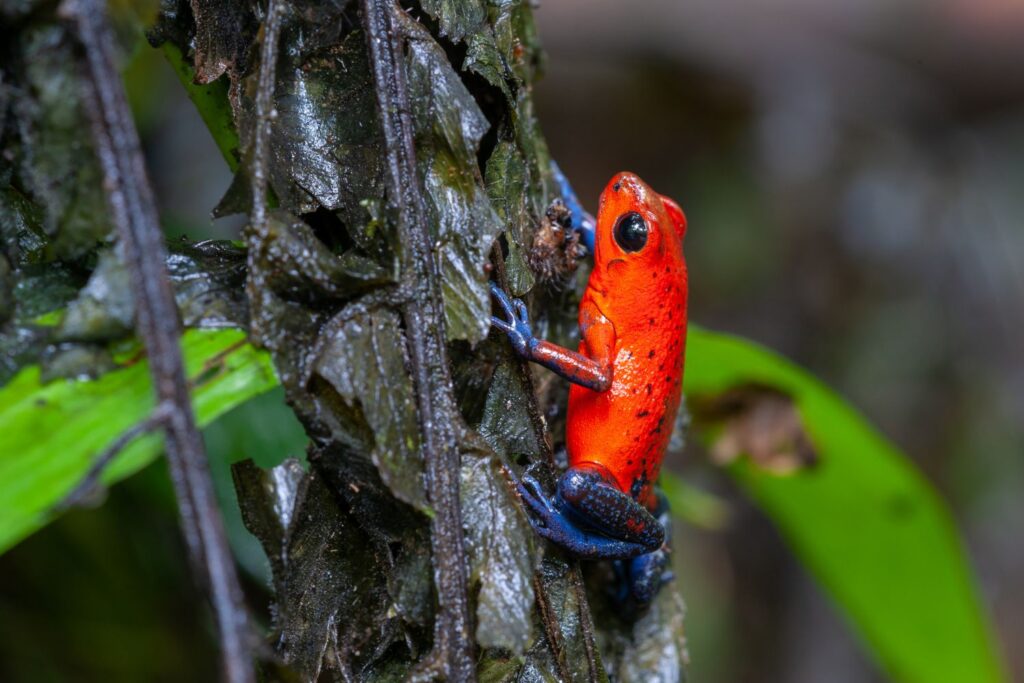
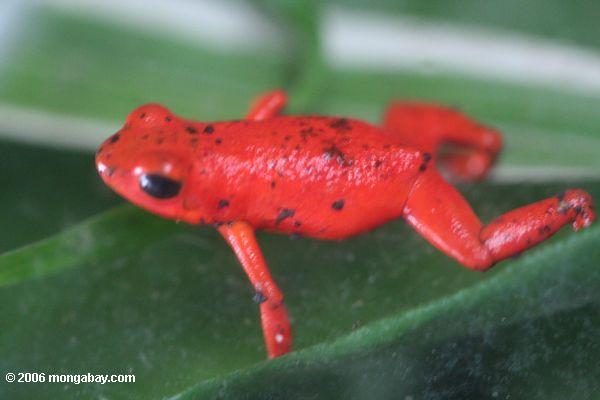
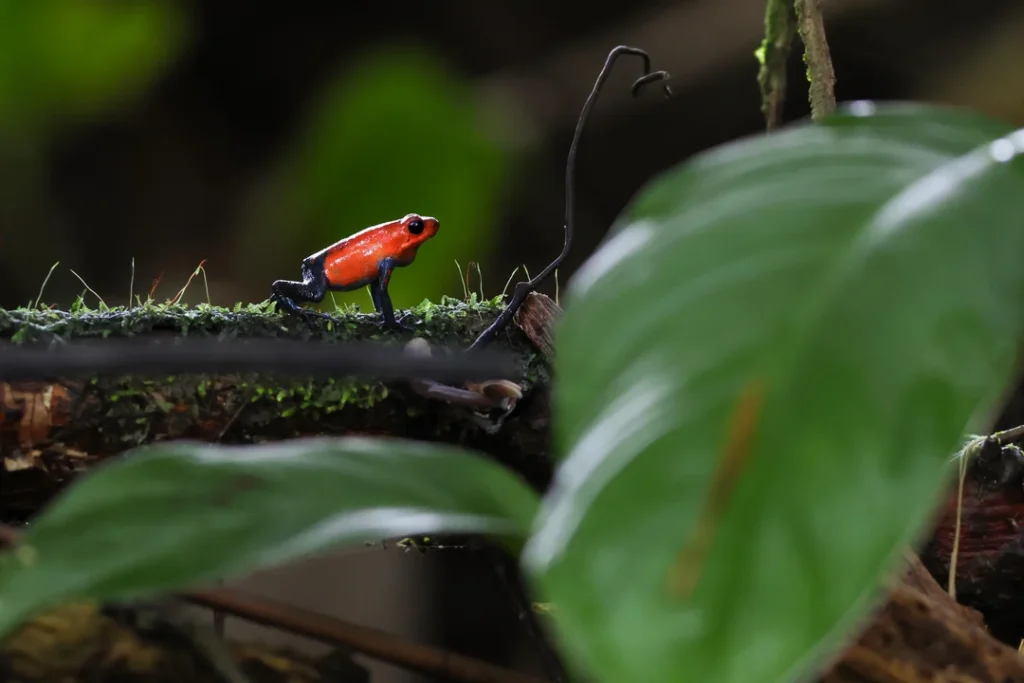
Glass frogs
Small, delicate, and translucent, their internal organs can be seen through their bellies. They are found near streams in humid forests and often rest on the underside of leaves.
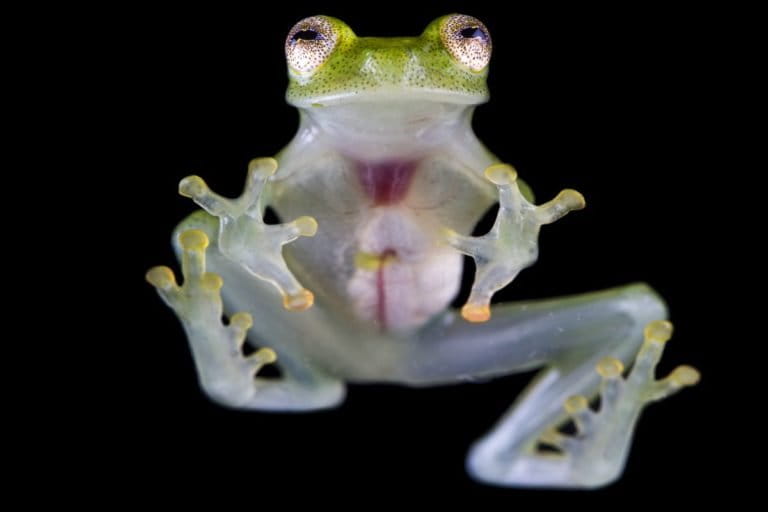
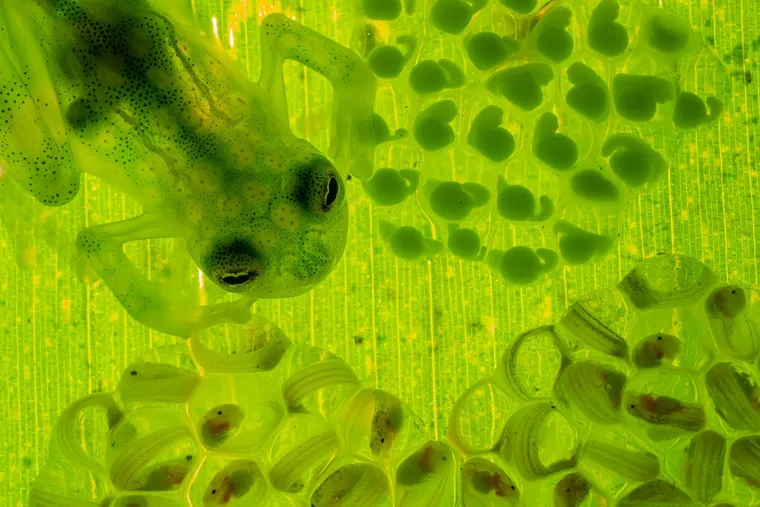
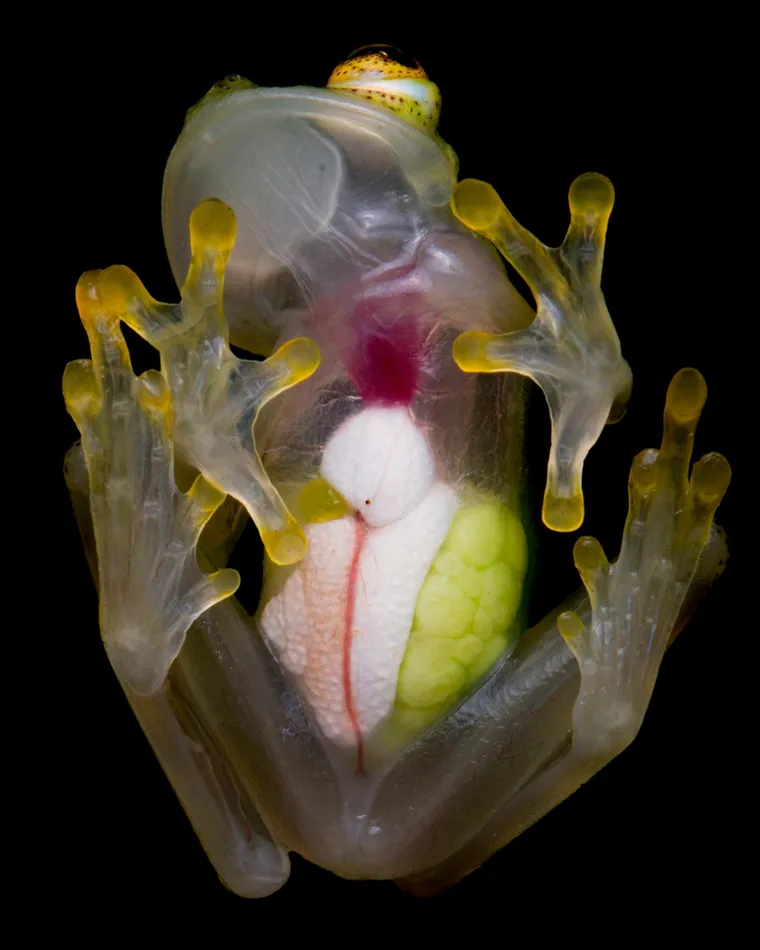
Golden poison frog
Bright yellow in color, it is a rare species and highly sought after by wildlife observers. Although it produces a powerful toxin in nature, admiring it from a distance is completely safe.
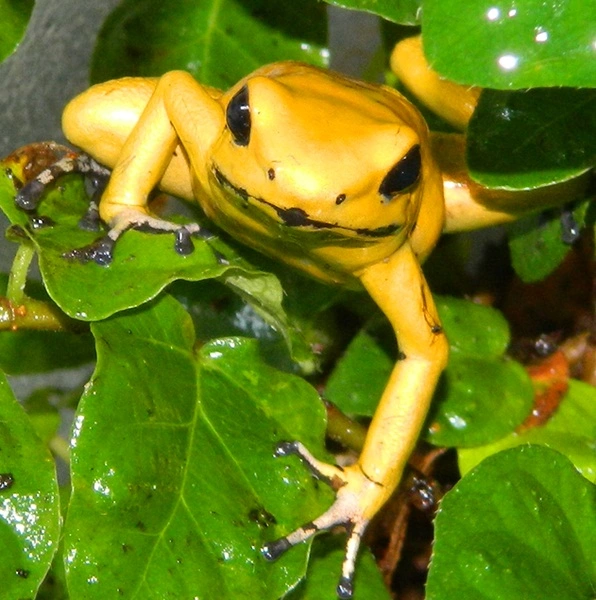
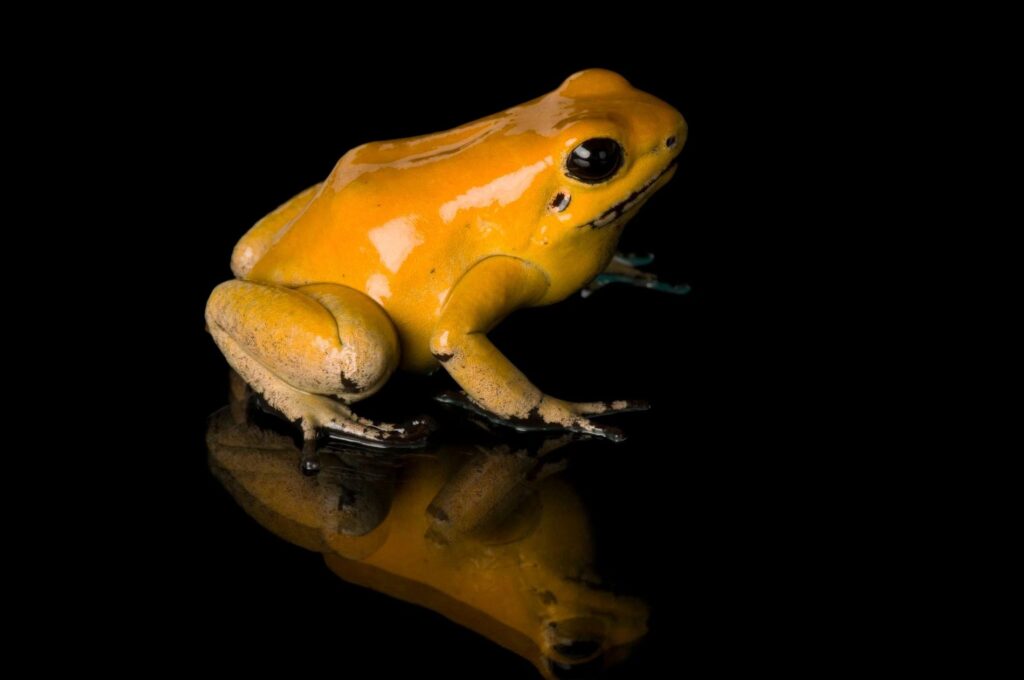
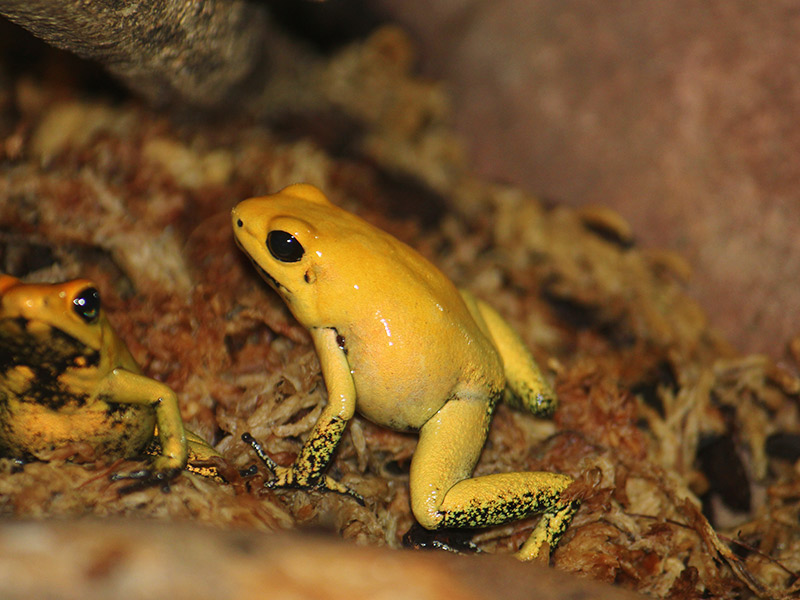
Green and black poison dart frog
Their electric green and deep black patterns look like they have been hand-painted. They are common in humid forests and tend to move between leaf litter and streams.
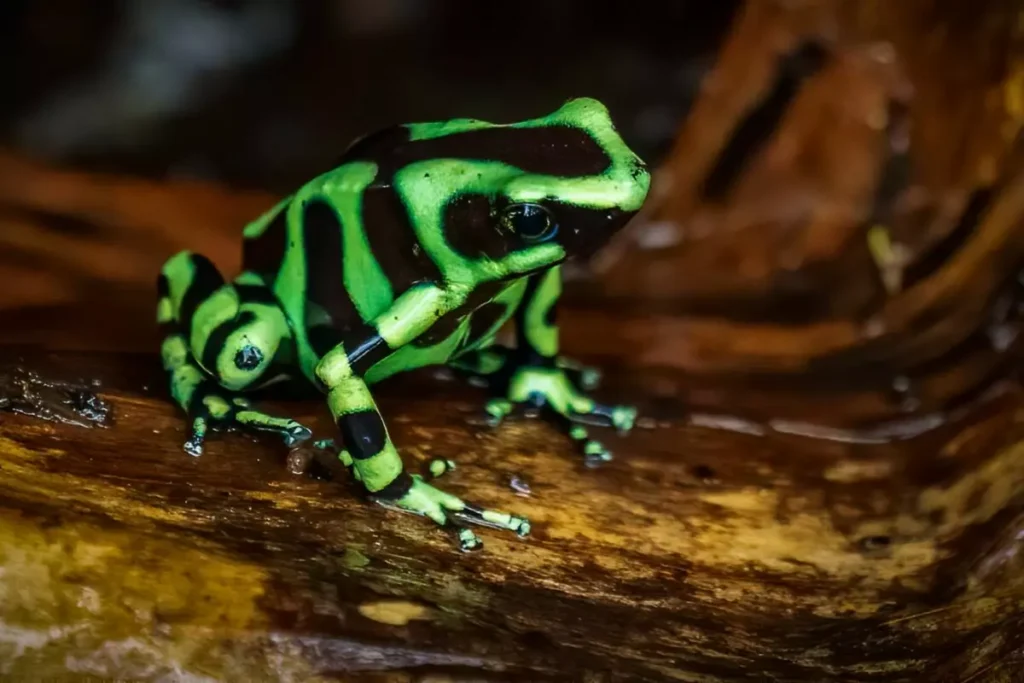
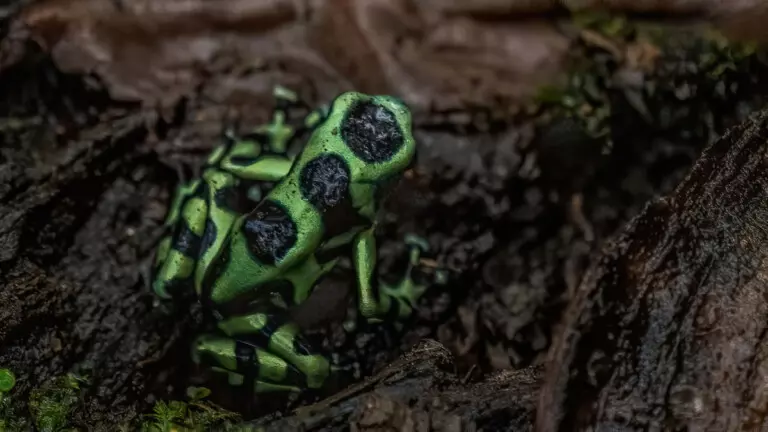
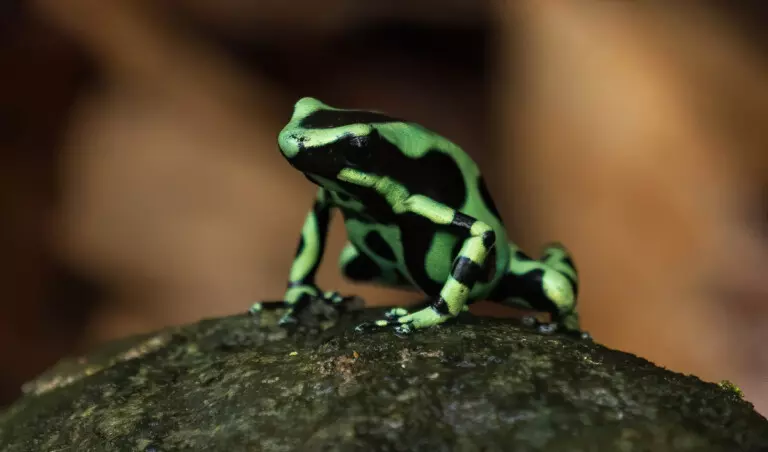
Blue poison dart frog
With a bright blue body and red head, this species is typical of the Caribbean lowlands. Its contrasting colors make it one of the most photogenic.
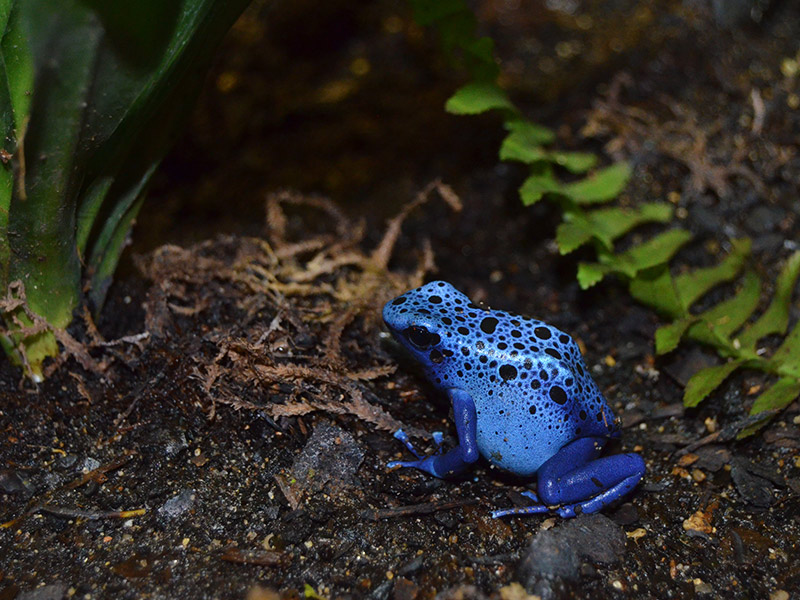
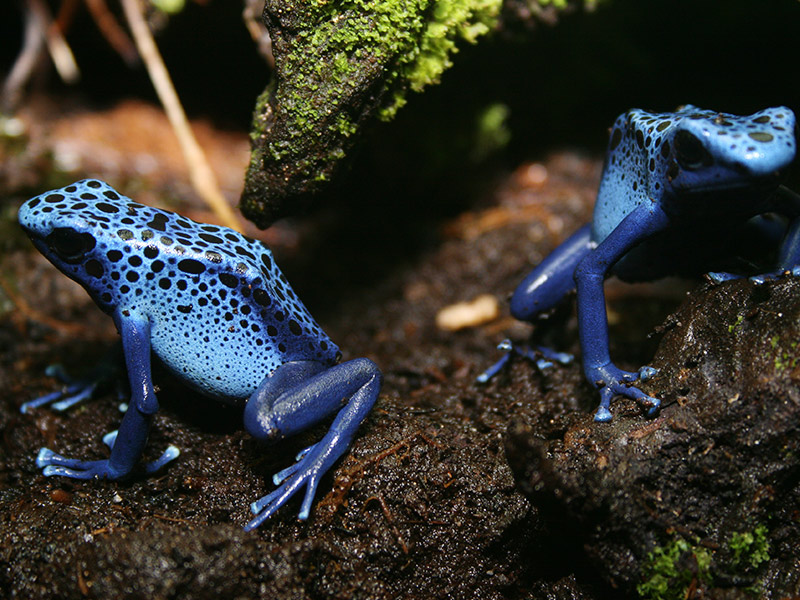
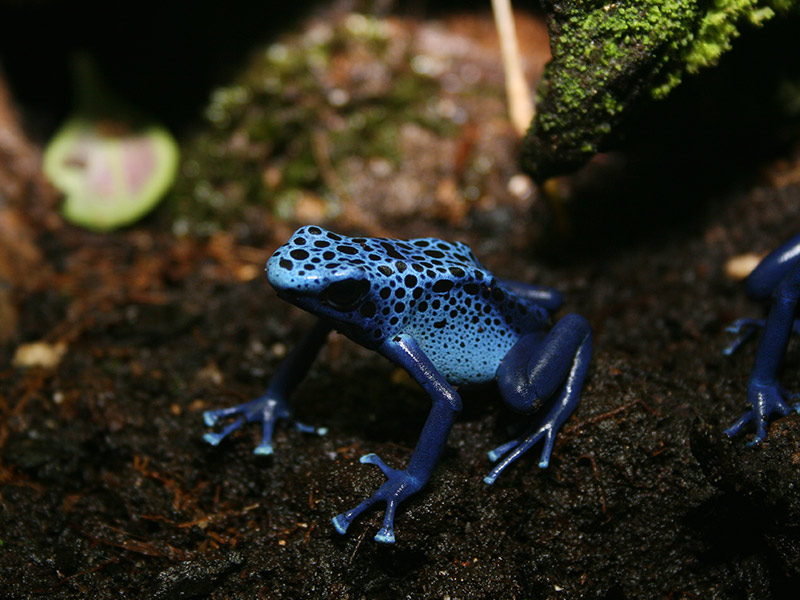
Kermit the Frog or leaf frog
Bright green in color and friendly in appearance, it resembles the famous puppet Kermit. Nocturnal, it usually perches on broad leaves near bodies of water.
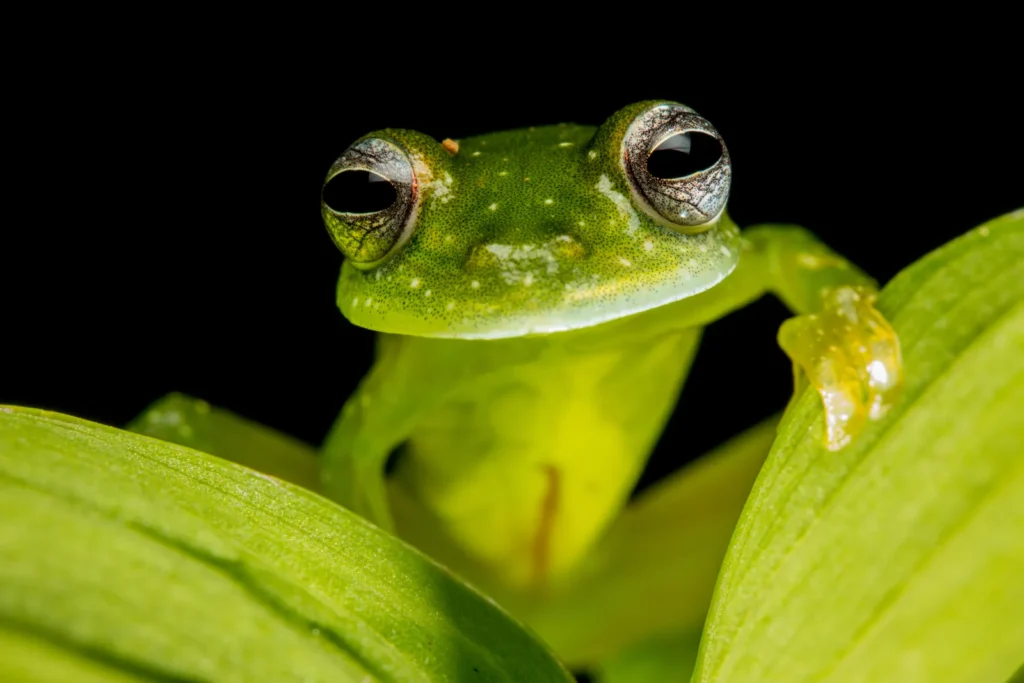
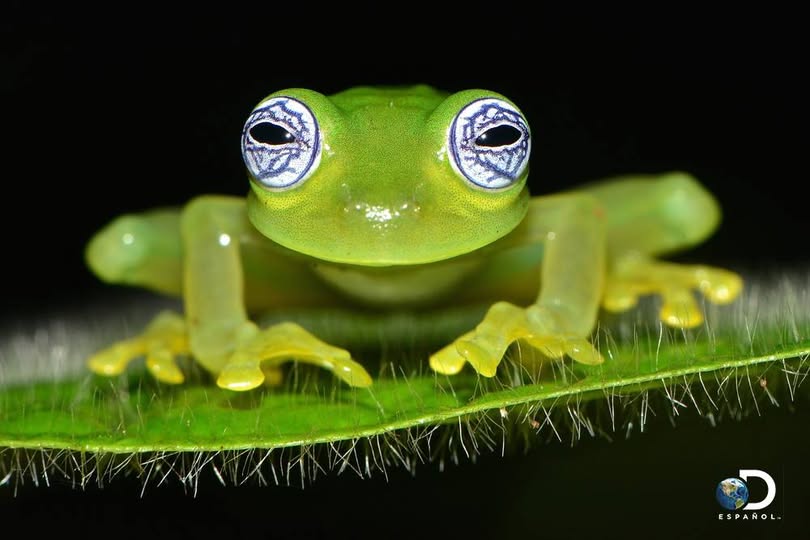
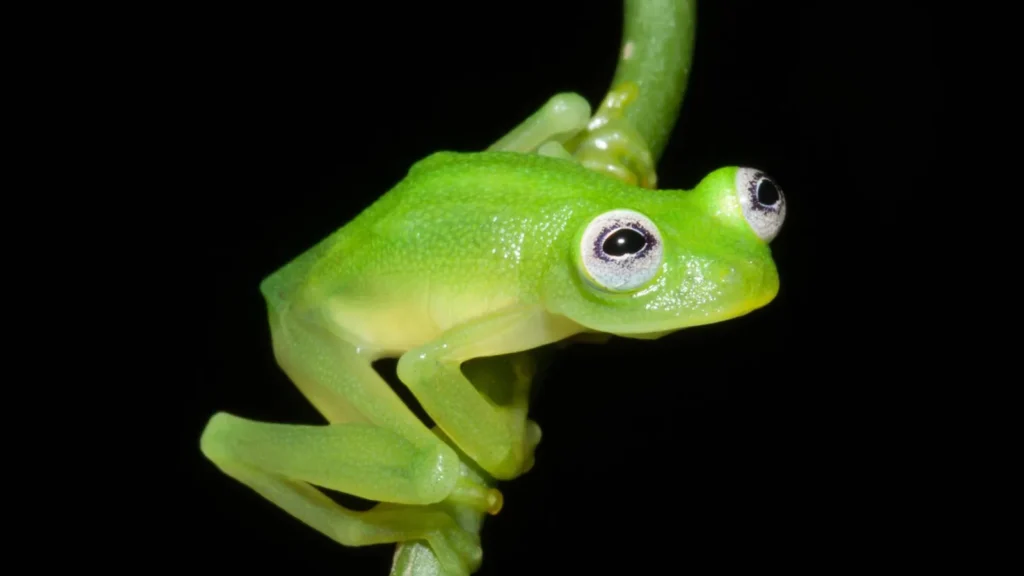
Hourglass Tree Frogs
The “hourglass frog” of Costa Rica is the yellowish tree frog (Dendropsophus ebraccatus), named for the dark spots on its back that resemble an hourglass. It is a nocturnal arboreal amphibian that lives in lowland wetlands and tropical or subtropical forests on the Pacific and Caribbean sides of the country. Characterized by its smooth olive-yellow skin with dark spots, it is capable of laying its eggs both in water and on land.
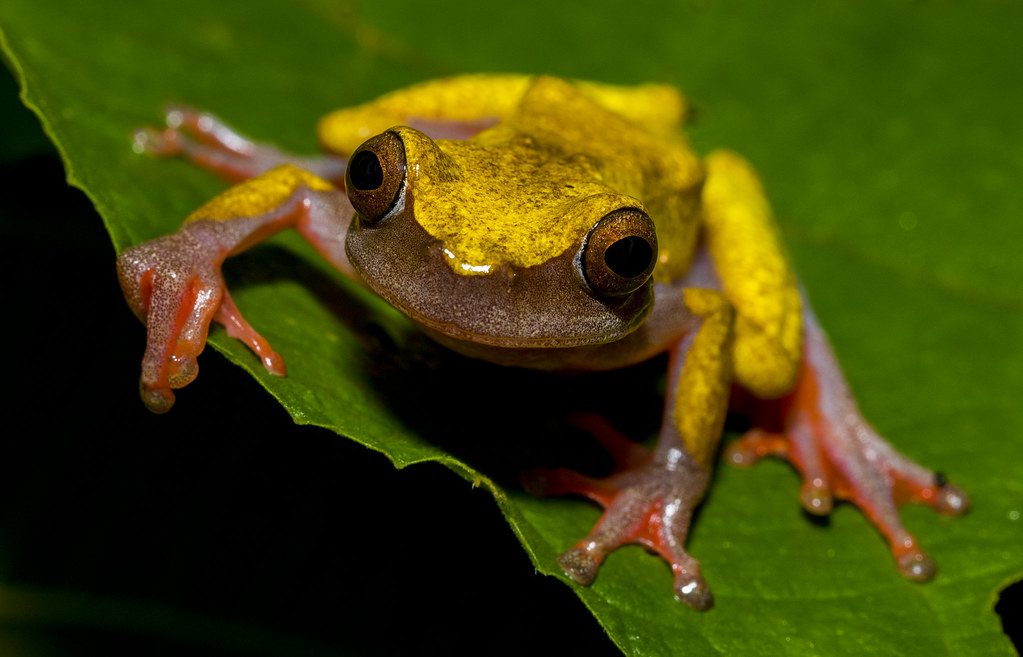
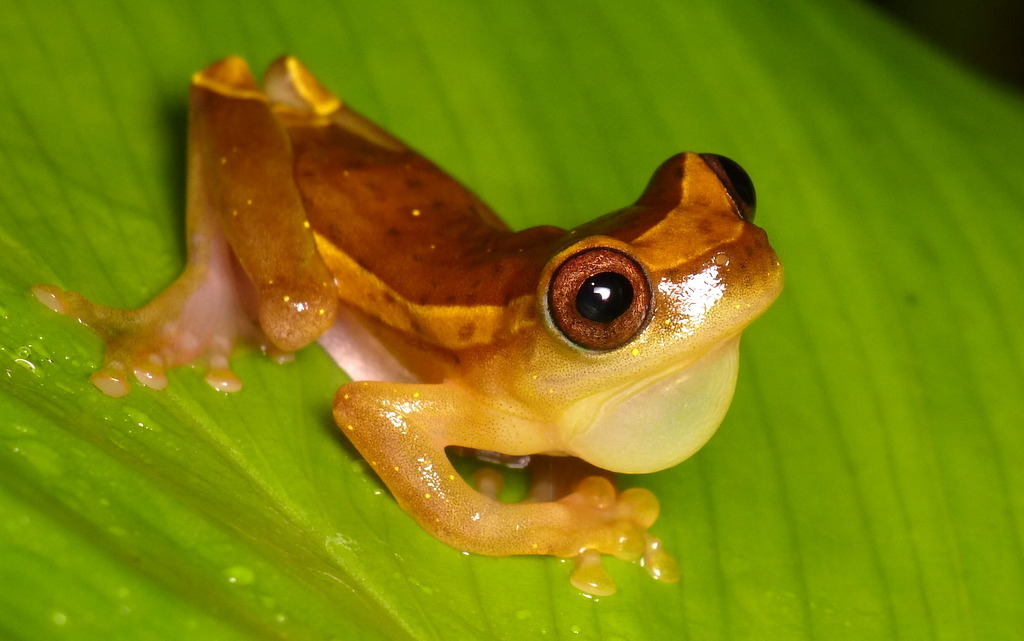
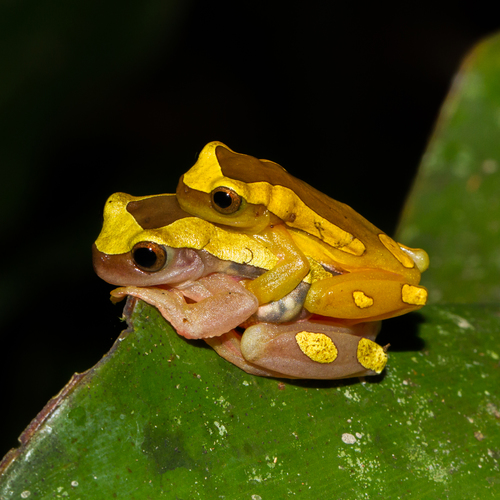
Milk Frog of Costa Rica
This is a nocturnal frog that is usually found perched on tree branches and vegetation while searching for food at night. It takes refuge in bromeliads, tree hollows, under the bark of both living and dead trees, or in banana or heliconia pods during the dry season. It produces a milky secretion when threatened. With a grayish-brown body and pale blue limbs, it lives high up in the trees.
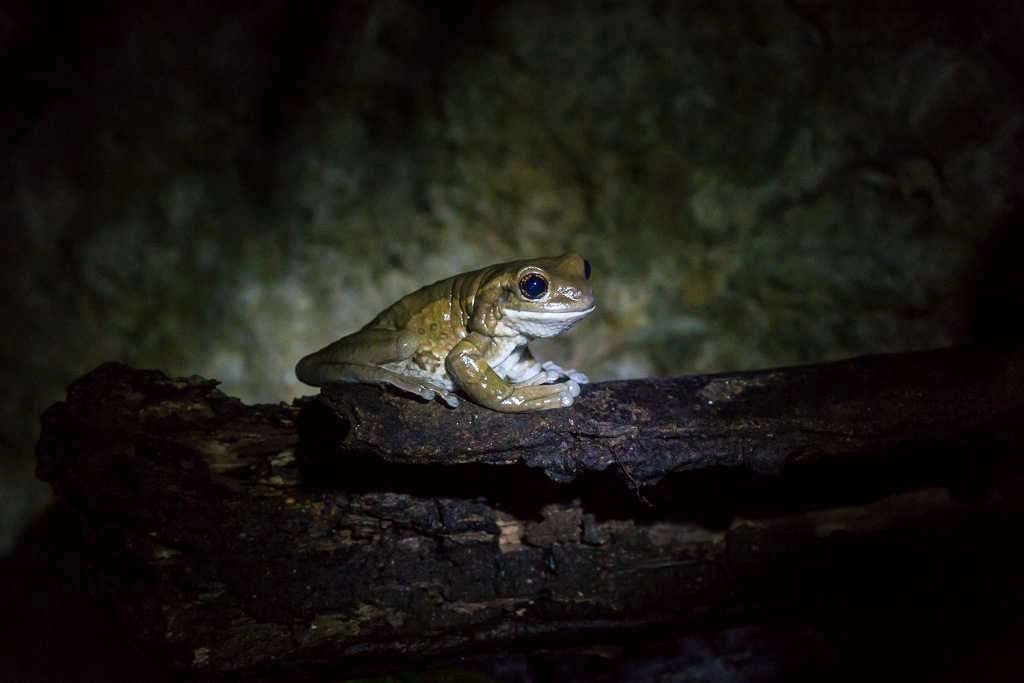
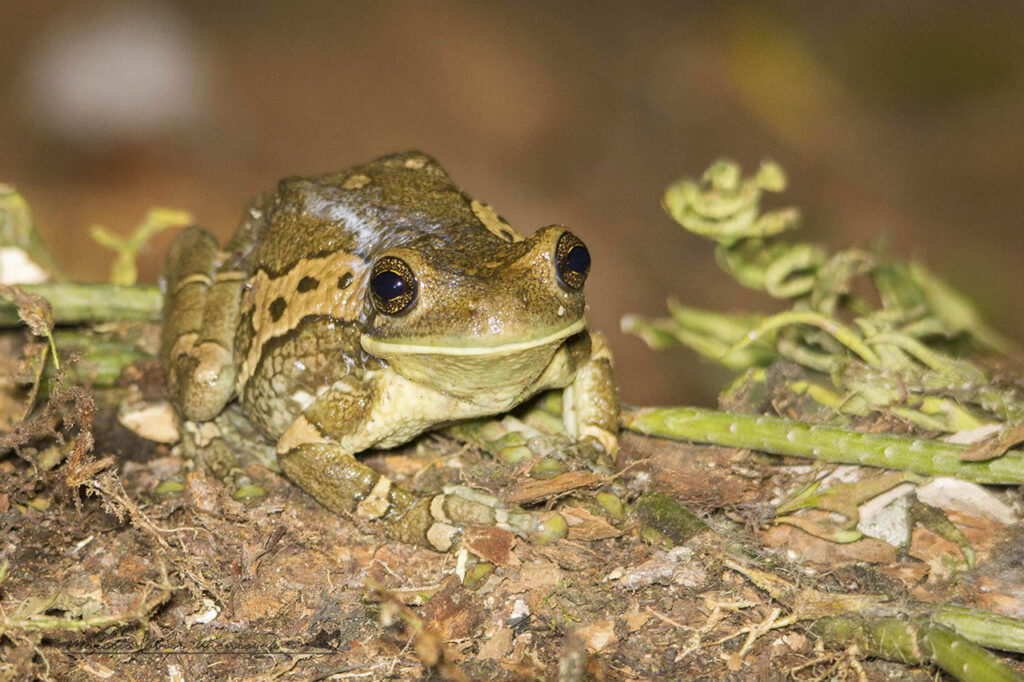
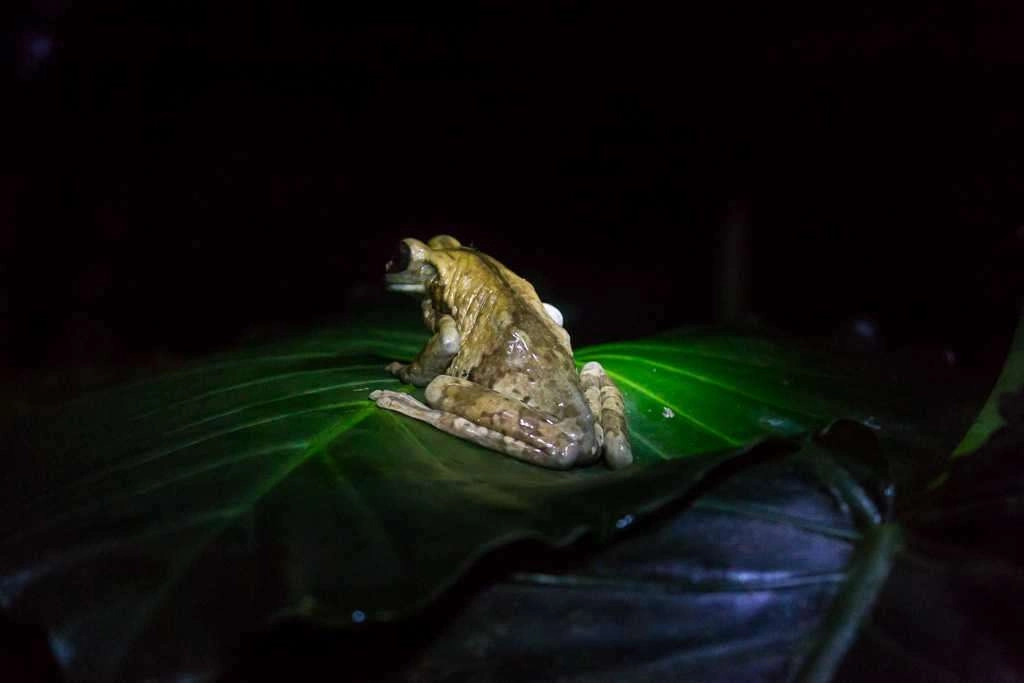
Giant toad
Also known as the cane toad, it is one of the largest amphibians in Costa Rica. Its robust appearance and rough skin make it unmistakable. This enormous toad can reach 17 cm in length and can be found active both at night and during the day. Like all toads and frogs of its size, it is terrestrial. In terms of location, it can be found throughout the country.
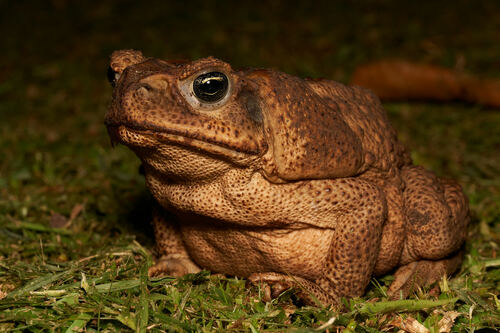
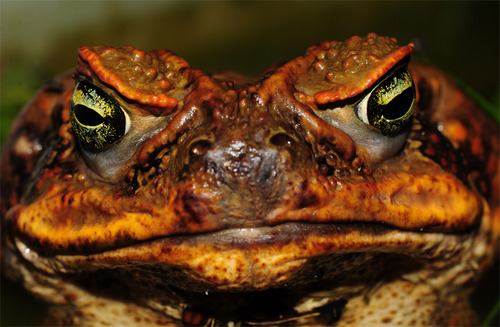
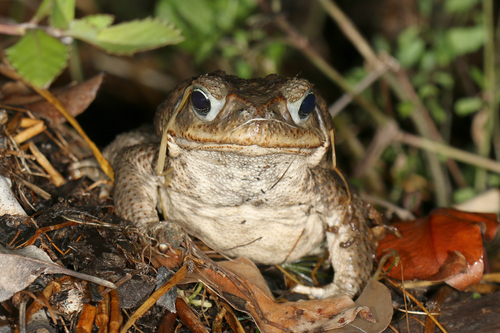
Crowned tree frog
It has a kind of serrated crown on the top of its head. Once again, I am talking about a frog that is in danger of extinction due to the destruction of its habitat, the tropical forests. It can be found in central Costa Rica, is nocturnal, arboreal, and measures about 8 cm.
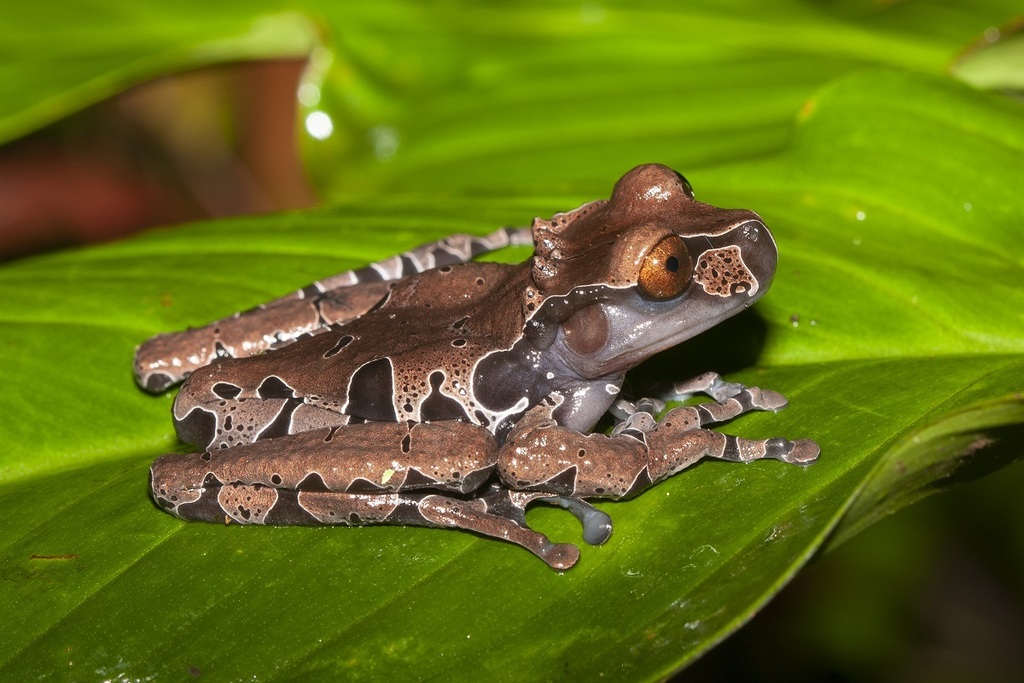
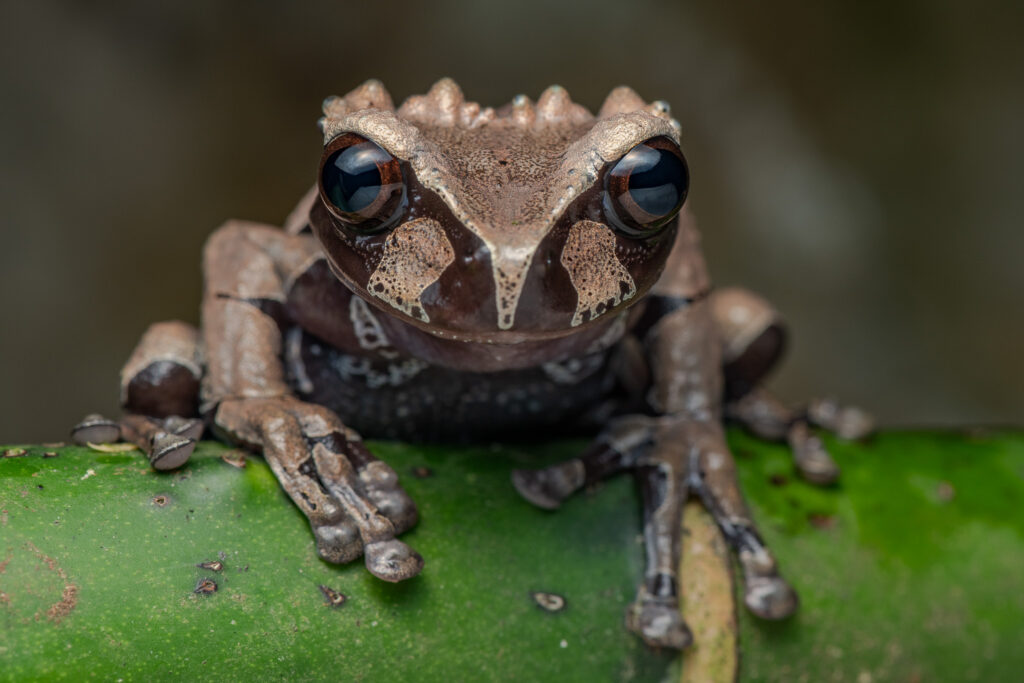
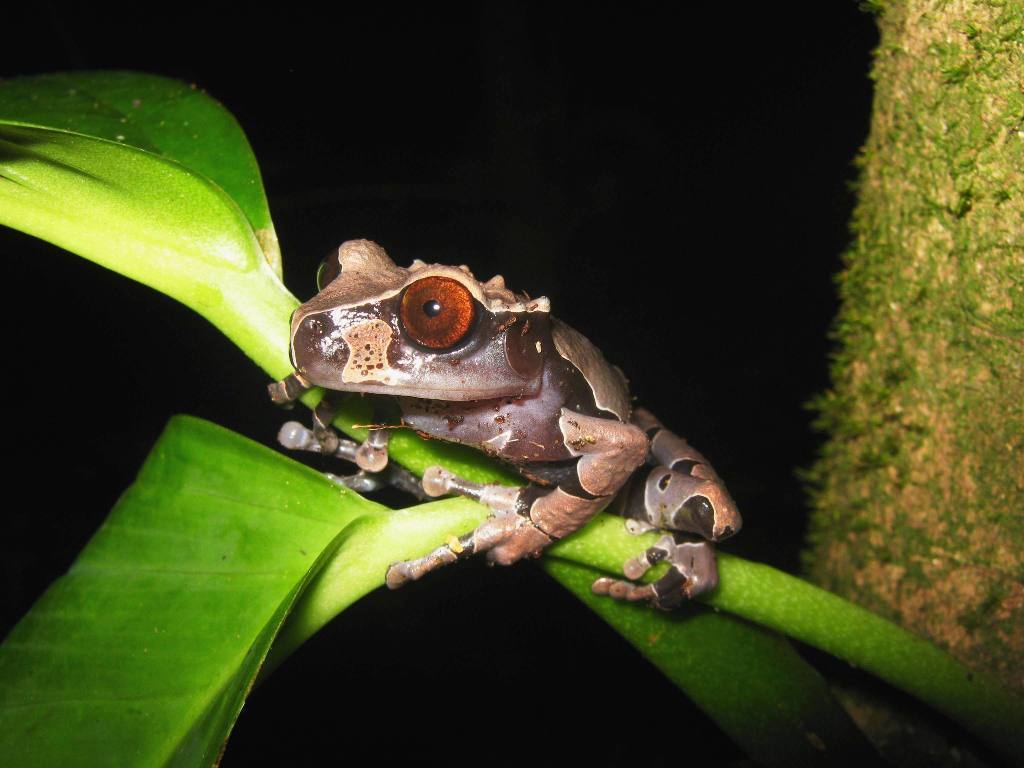
Common rain frog
This 5 cm frog can be seen throughout the country except in the province of Guanacaste. It is nocturnal and can be found both on the ground and in trees.
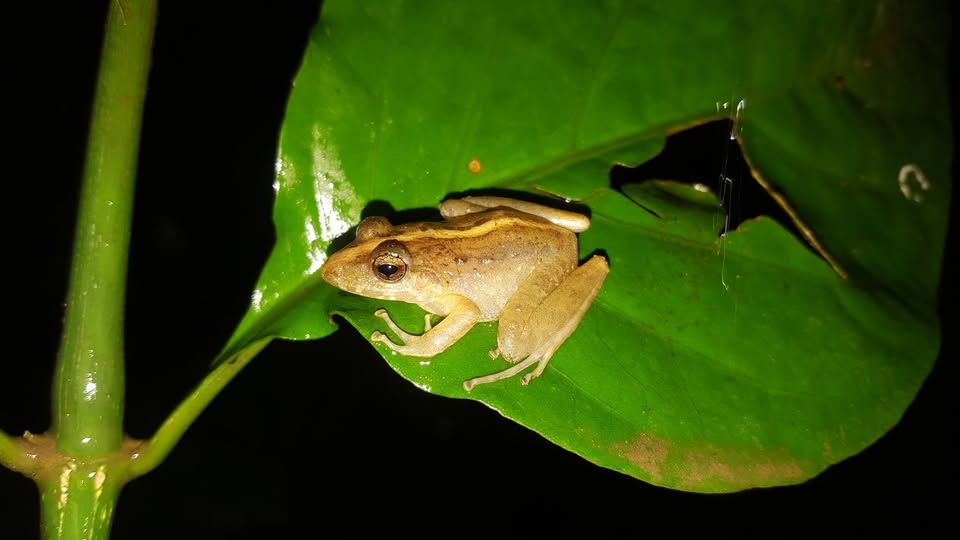
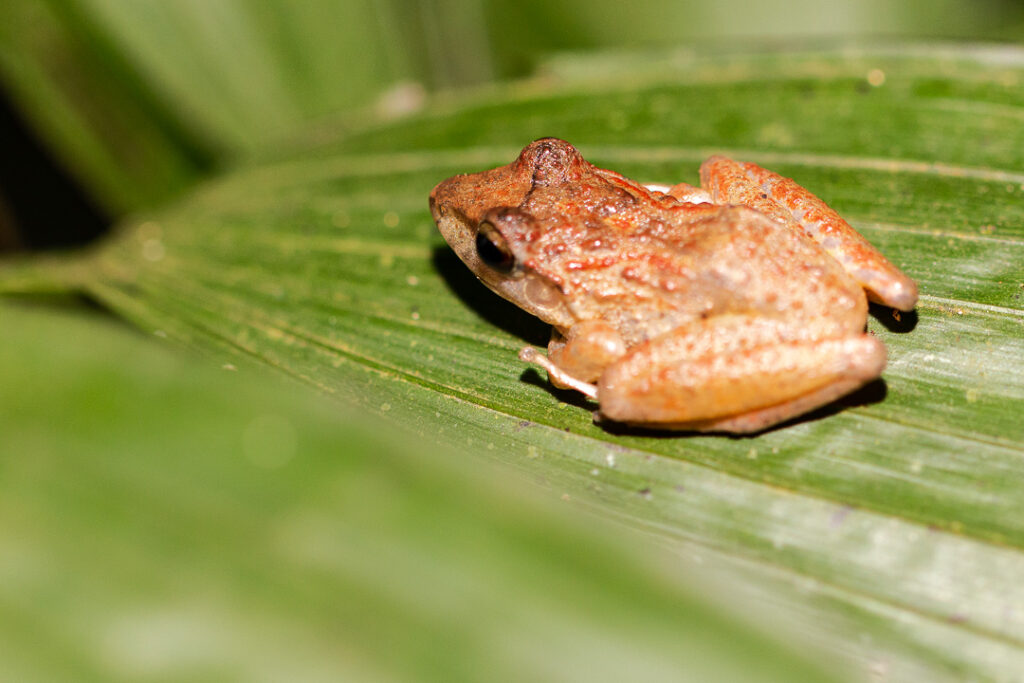
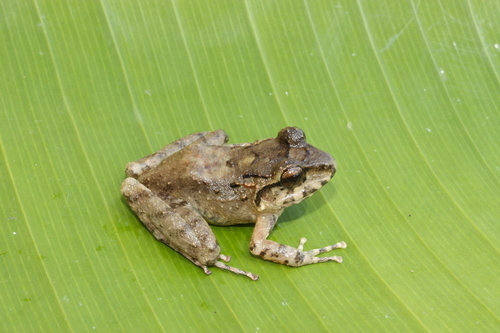
The Calf Frog or Chicken-Eating Frog
They can grow up to 17 cm long. In fact, they are so large that they feed on other smaller frogs, snakes, small birds, and even bats. These nocturnal creatures live on the ground and can be found along the Atlantic coast, the southern Pacific coast, and most of the northern part of the country.
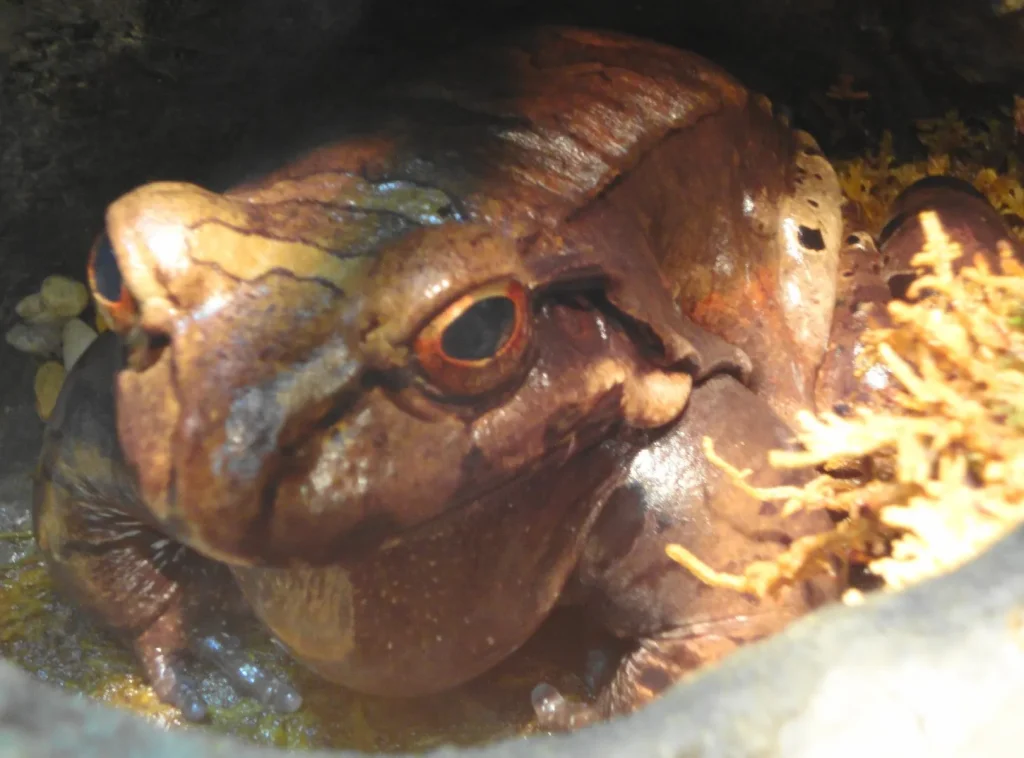
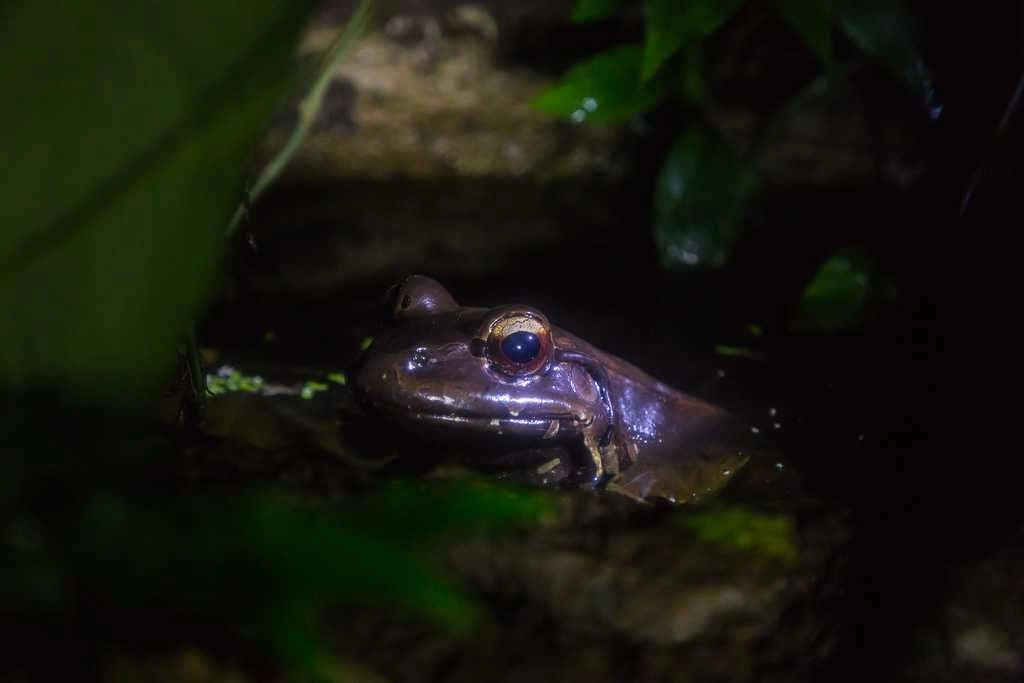
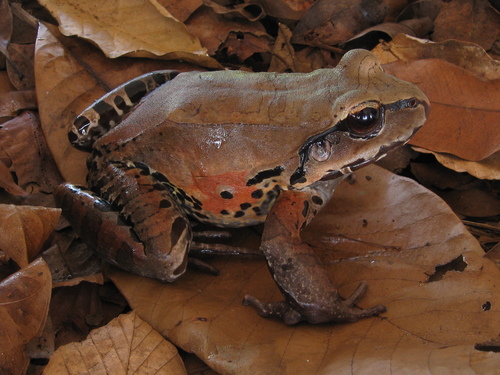
When and where to see frogs in Costa Rica
The time of day is key for observing frogs. Most species are most active at dusk and during the night, when humidity increases and the forest fills with sounds.
From May to November, the green season is especially good for spotting them, as the rains cool the air and encourage their activity. Mornings after a storm are also excellent for finding them resting on leaves or near small puddles.
Among the most recommended places are the tropical rainforests of the northern region, the cloud forests of Monteverde, the Caribbean wetlands, and the nature reserves near rivers and streams.
Tips for observing frogs with respect
Enjoying frog watching in their natural environment is an unforgettable experience, but it must be done responsibly.
- Always stay on marked trails to avoid stepping on sensitive areas.
- Use flashlights with red light, as white lights can affect your eyes.
- Keep a safe distance and avoid touching or moving them.
- Speak softly so as not to upset him.
- Do not pick them or handle them, as human oils can damage their skin.
- And, if you take a guided hike, follow the recommendations of your guide, who knows the best practices for protecting them.
Sensorial Sunsets
Navigate articles





